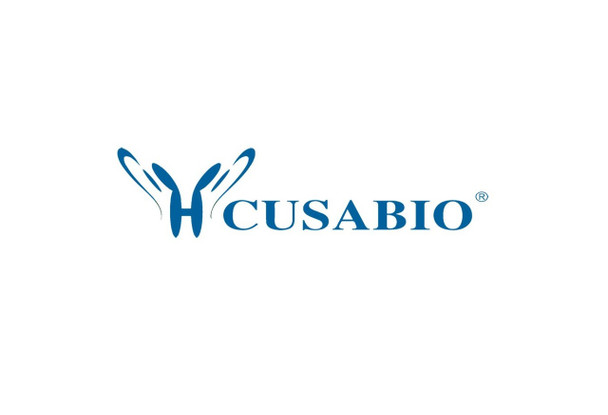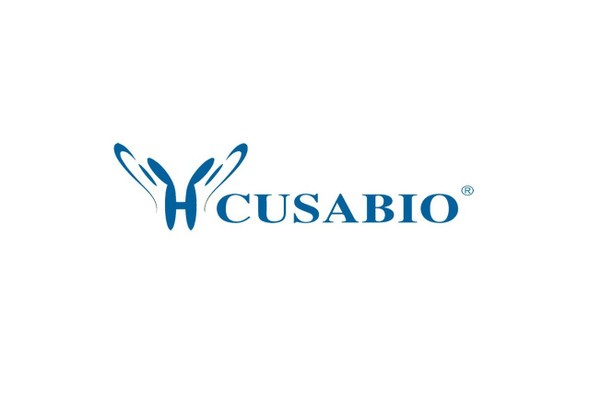Cusabio Mouse Recombinants
Recombinant Mouse Ventricular zone-expressed PH domain-containing protein 1 (Veph1), partial | CSB-EP025844MO
- SKU:
- CSB-EP025844MO
- Availability:
- 3 - 7 Working Days
Description
Recombinant Mouse Ventricular zone-expressed PH domain-containing protein 1 (Veph1), partial | CSB-EP025844MO | Cusabio
Alternative Name(s): Protein melted homolog (Veph)
Gene Names: Veph1
Research Areas: Others
Organism: Mus musculus (Mouse)
AA Sequence: AMTESTFPQQKDLEQLQLHLEEVRFFDVFGFSETAGAWQCFMCNNPEKATVVNQDGQPLIEGKLKEKQVRWKFIKRWKTHYFTLAGNQLLFQKGKSKDDPDDSPIELSKVQSVKAVAKKRRDRSLPRAFEIFTDSKTYVFKAKDEKNAEEWLQCINVALAQAKERESREVTTYL
Source: E.coli
Tag Info: N-terminal 10xHis-tagged and C-terminal Myc-tagged
Expression Region: 660-833aa
Sequence Info: Partial
MW: 27.7 kDa
Purity: Greater than 85% as determined by SDS-PAGE.
Relevance: Interacts with TGF-beta receptor type-1 (TGFBR1) and inhibits dissociation of activated SMAD2 from TGFBR1, impeding its nuclear accumulation and resulting in impaired TGF-beta signaling. May also affect FOXO, Hippo and Wnt signaling.
Reference: "The status, quality, and expansion of the NIH full-length cDNA project: the Mammalian Gene Collection (MGC)." The MGC Project Team Genome Res. 14:2121-2127(2004)
Storage: The shelf life is related to many factors, storage state, buffer ingredients, storage temperature and the stability of the protein itself. Generally, the shelf life of liquid form is 6 months at -20?/-80?. The shelf life of lyophilized form is 12 months at -20?/-80?.
Notes: Repeated freezing and thawing is not recommended. Store working aliquots at 4? for up to one week.
Function: Interacts with TGF-beta receptor type-1 (TGFBR1) and inhibits dissociation of activated SMAD2 from TGFBR1, impeding its nuclear accumulation and resulting in impaired TGF-beta signaling. May also affect FOXO, Hippo and Wnt signaling.
Involvement in disease:
Subcellular Location: Cell membrane, Peripheral membrane protein, Cytoplasmic side
Protein Families: MELT/VEPH family
Tissue Specificity: Specifically expressed in kidney and eye. In the eye, expressed in retinal pigmented epithelium but not in the neural retina.
Paythway:
Form: Liquid or Lyophilized powder
Buffer: If the delivery form is liquid, the default storage buffer is Tris/PBS-based buffer, 5%-50% glycerol. If the delivery form is lyophilized powder, the buffer before lyophilization is Tris/PBS-based buffer, 6% Trehalose, pH 8.0.
Reconstitution: We recommend that this vial be briefly centrifuged prior to opening to bring the contents to the bottom. Please reconstitute protein in deionized sterile water to a concentration of 0.1-1.0 mg/mL.We recommend to add 5-50% of glycerol (final concentration) and aliquot for long-term storage at -20?/-80?. Our default final concentration of glycerol is 50%. Customers could use it as reference.
Uniprot ID: A1A535
HGNC Database Link: N/A
UniGene Database Link: UniGene
KEGG Database Link: KEGG
STRING Database Link: STRING
OMIM Database Link: N/A









